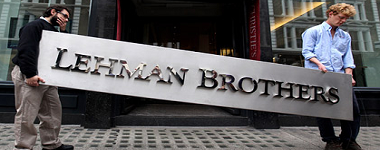This post is the tenth in a series of twelvetwelvetwelve on Large and Complex Banks.
The bankruptcy of Lehman Brothers and its 209 registered subsidiaries was one of the largest and most complex in history, with more than $1 trillion of creditor claims in the United States alone, four bodies of applicable U.S. laws, and insolvency proceedings that involved over eighty international legal jurisdictions. The experience of resolving Lehman has led to an active debate regarding the effectiveness of applying the U.S. Chapter 11 Bankruptcy Code to complex financial institutions. In this post, we draw on ourÂ
Economic Policy Reviewarticle to highlight the challenges of resolving Lehman in the U.S. Bankruptcy Court.

Creditor Recoveries
We estimate the payout ratio to Lehman’s creditors thus far to be about 28 percent on estimated allowable claims of more than $300 billion, implying a loss to creditors and counterparties of more than $200 billion. (We use “Lehman†to refer to the holding company and its subsidiaries as an ensemble; otherwise, we specify the particular Lehman company subsidiary.) In order to provide a benchmark, we compare the recovery rate for senior unsecured creditors of Lehman’s holding company, Lehman Brothers Holdings Inc. (LBHI), with those of similar creditors in the past. We find that the recovery rate for LBHI creditors has been below average so far—about 27 percent versus more than 55 percent historically (see chart below). Our article shows that this remains true even after accounting for prevailing economic conditions (for example, recessions, industrial distress, and poor credit conditions) likely to result in a recovery rate lower than the historical average. The Lehman estate is scheduled to make further distributions to creditors, but it remains to be seen how much further recovery rates can improve.
There was substantial variation in recovery rates even for similar creditor groups. For example, of Lehman’s derivative subsidiaries, creditors of three subsidiaries received full recovery on their claims but those of the largest subsidiary (LBSF) suffered substantial losses (see chart below). The variation in the recoveries depended on what was negotiated between LBHI creditors (who had claims on the holding company) and derivative creditors (who had claims on the subsidiaries), whether LBHI guaranteed the debt of the subsidiary, whether the securities were centrally or bilaterally cleared, and how the U.S. Bankruptcy Court interpreted various provisions of the Chapter 11 code.

